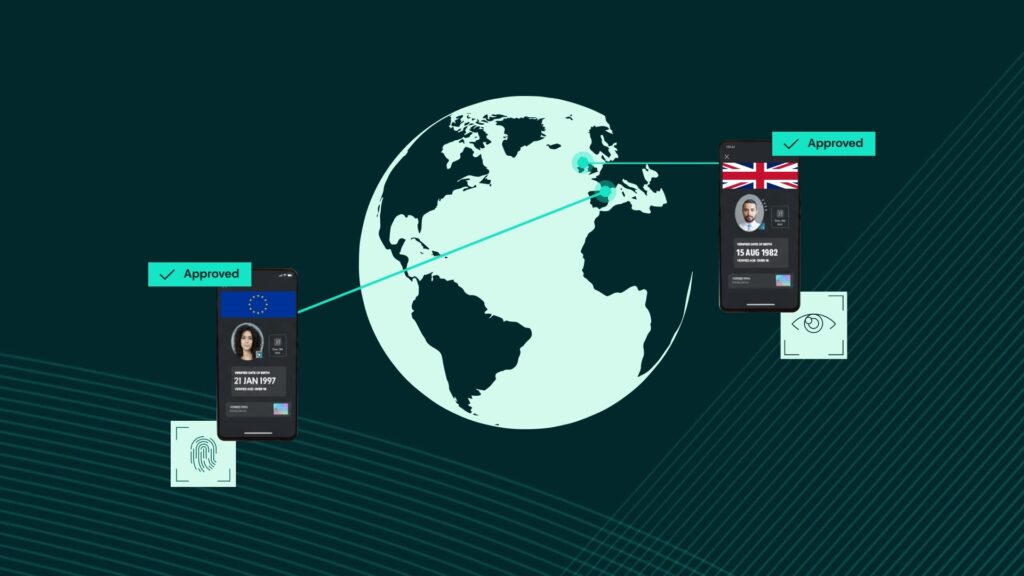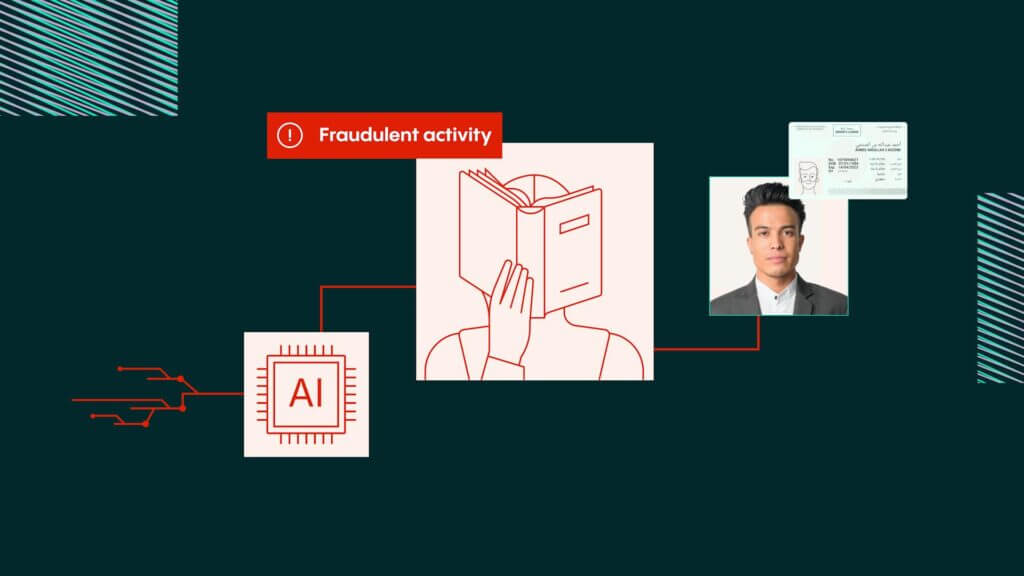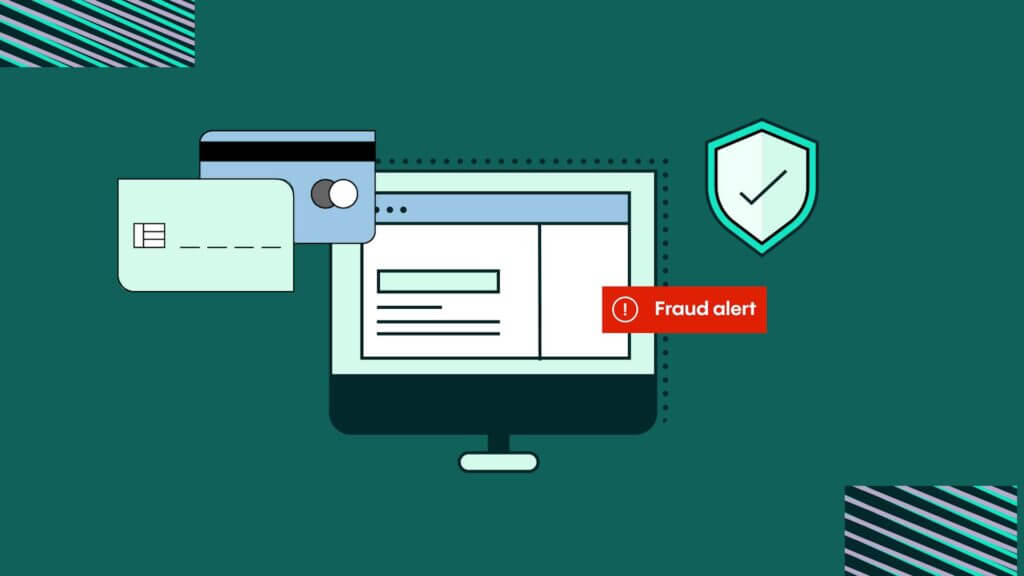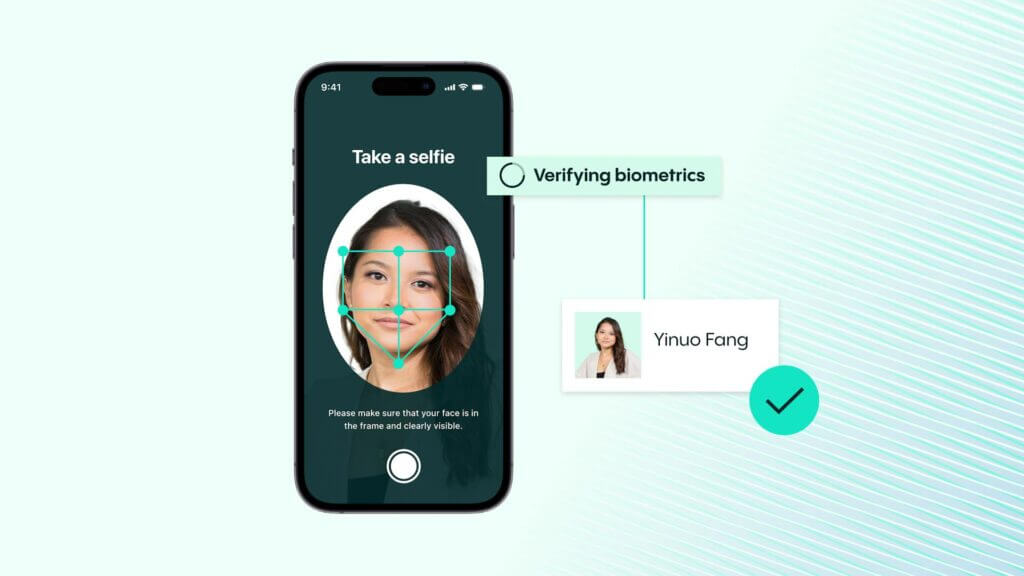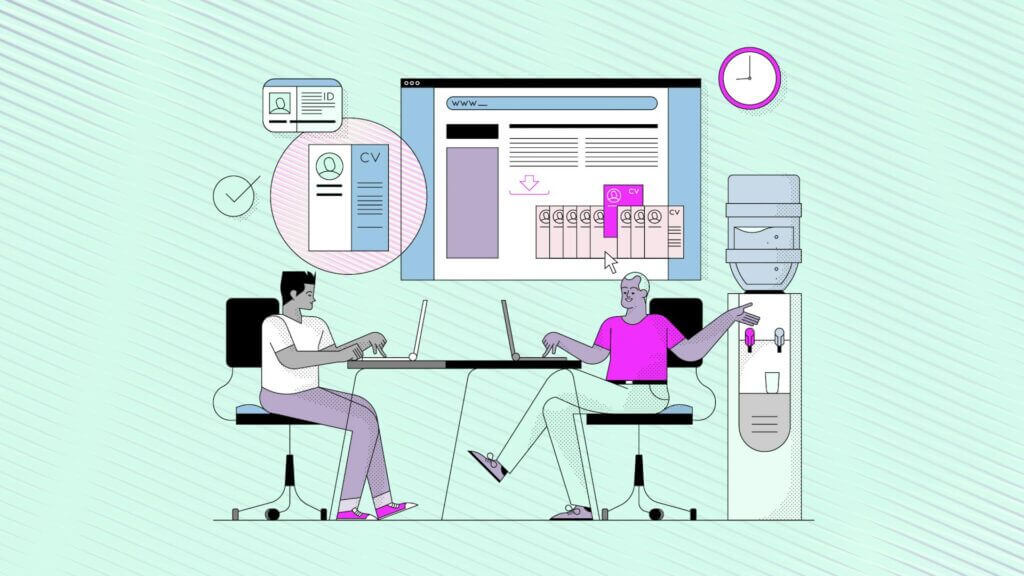IDV Article
UK-specific GDPR compliance: A practical guide
Struggling to stay on top of data protection in the financial services sector? With the UK’s post-Brexit regulations, compliance has never been more critical. Our easy-to-follow guide and step-by-step checklist will help your business confidently navigate UK GDPR compliance.
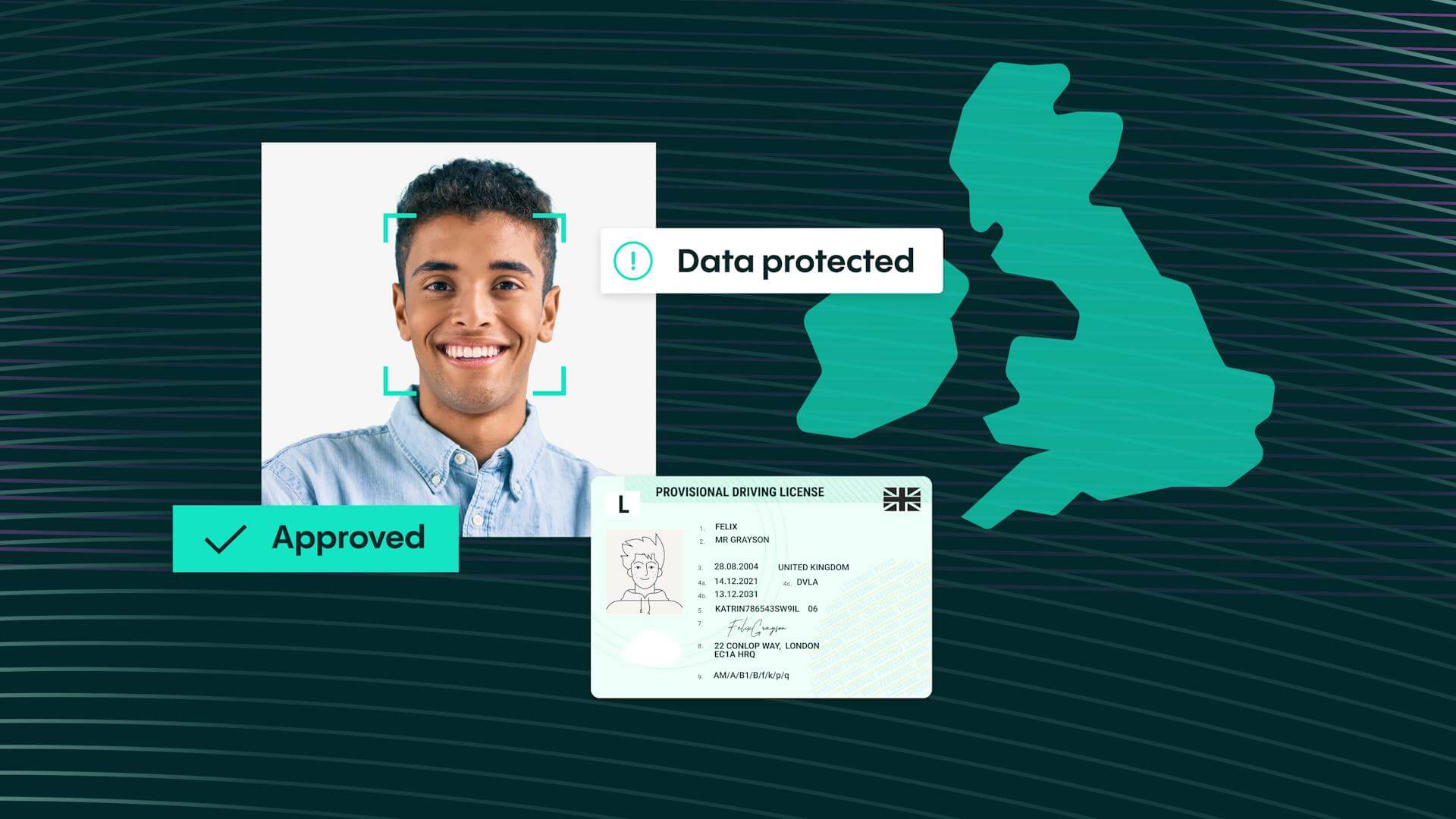
Although the United Kingdom (UK) has exited the European Union (EU), it remains committed to maintaining high standards of data protection. The General Data Protection Regulation (GDPR), as implemented in the UK, is known as the UK GDPR. This regulation, alongside the Data Protection Act 2018, forms the bedrock of the UK’s data protection framework, guiding organizations in the processing of personal data and the safeguarding of personal information.
Following the transition period, the UK retained key components of the EU GDPR, adapting them to local needs while ensuring alignment with European Economic Area (EEA) data standards. The UK GDPR applies to all organizations processing personal data collected from individuals located in the UK, whether the entity is domestic or international, and to organizations that are UK-based involved and process personal data.
This guide provides practical steps to help data controllers and data processors, including in the financial services sector, navigate UK GDPR compliance, grounded in the data protection principles and the rights of data subjects.
On October 23 2024, the UK introduced the Data (Use and Access) Bill to Parliament. The bill, projected to pass and become law sometime in summer 2025, will introduce amendments to the UK GDPR. Although it will not introduce fundamental changes from the perspective of this overview, it is an item to monitor to assess how it will affect your organization.
Introduction to UK GDPR
The UK General Data Protection Regulation (UK GDPR) is a cornerstone data protection law in the United Kingdom (UK). Based on the European Union’s (EU) General Data Protection Regulation (EU GDPR), it has been tailored to meet the specific needs of the UK following the transition period after Brexit. The primary aim of the UK GDPR is to ensure that all UK-based organizations safeguard personal information, including personal data collected from individuals located in the UK, ensuring that organizations handle this data responsibly and transparently.
The UK GDPR applies to all organizations that i) are UK-based; or ii) engage in the processing of personal data belonging to data subjects residing in the UK. This includes businesses, charities, and public authorities. Since its enforcement in January 2021, the regulation has been overseen by the Information Commissioner’s Office (ICO), which ensures compliance and addresses violations in line with the established data protection principles and principles, rights, and obligations set out in the legislation.
Key principles underpinning the UK GDPR include lawfulness, fairness, and transparency—ensuring that data is collected for clear purposes and is adequate, relevant, and limited to what is necessary. Organizations must establish a lawful basis for the processing of personal data, whether through obtaining consent, fulfilling contractual obligations, or demonstrating legitimate interests. The regulation also grants data subjects significant rights, including the right to access, rectify, and erase their personal information.
To comply with the UK GDPR and the Data Protection Act 2018, organizations must implement appropriate technical and organizational measures to protect data from loss, destruction, or damage, and maintain its confidentiality and integrity. These requirements align with the broader general data protection regulations observed within the European Economic Area (EEA).
Non-compliance with the UK data protection framework can lead to severe penalties. In 2024 alone, the UK’s data protection authority, the ICO, handled 36,049 complaints. Despite the global importance of privacy rights, awareness of information collected and regulated under local privacy laws remains limited. As of July 2024, only 57 percent of individuals in the UK were aware of their data rights, compared to 53 percent globally.
In 2025, the UK issued its largest GDPR-related fine to date, reinforcing the critical importance of regulatory adherence. Notably, British Airways was fined €22.05 million in 2020 for violations of the GDPR—a benchmark case under both the EU GDPR and UK GDPR frameworks.
Understanding GDPR in the UK post-Brexit
With the UK now outside the European Union, businesses must recognize that while the GDPR has been retained in the UK through the Data Protection Act 2018, nuances require attention. The transition from EU law to UK law has significant implications for businesses operating in or with the EU, particularly regarding compliance and enforcement. The Act maintains the fundamental rights of individuals regarding their personal data, emphasizing transparency, accountability, and security. Financial services firms must adapt their practices to align with the UK GDPR and UK-specific regulations, ensuring they protect customer data effectively while complying with legal requirements.
Integrating effective business practices is crucial to ensure compliance with GDPR. Organizations must adopt suitable technological and organizational measures during the design stage and throughout the data processing lifecycle, ensuring data protection principles are followed in their business operations.
For detailed guidance, businesses can refer to the Information Commissioner’s Office (ICO) website, which provides resources, tools, and support to help organizations comply with data protection laws in the UK. The ICO plays a crucial role in enforcing compliance, holding organizations accountable for data protection violations, and shaping privacy policies.
The UK GDPR is founded on several key principles, including:

1. Lawfulness, fairness, and transparency
- Financial Services: Ensure transparent data processing, especially for KYC and AML obligations.
- Marketplaces/E-commerce/Gig Economy: Clearly inform customers how data is used for recommendations and marketing.
- Mobility/Transportation: Address transparency in processing location data for service optimization.
- Lawfulness, fairness, and transparency: Organizations must establish a legal basis for processing personal data, such as obtaining explicit consent. Managing compliance with GDPR obligations can be challenging due to the complexities involved in aspects like data accessibility and portability.
2. Purpose limitation
- Financial Services: Data collected for compliance cannot be repurposed without clear consent. It is crucial to obtain consent for any repurposing of data, ensuring it is explicit, informed, and freely given, in line with GDPR requirements.
- Marketplaces/E-commerce/Gig Economy: Limit data use to specific, disclosed purposes like personalized marketing.
- Mobility/Transportation: Ensure location data is used solely for intended services (e.g., route optimization).
3. Data minimization and accuracy
- Across all sectors, collect only the necessary data and keep it accurate to avoid unnecessary risks, ensuring the data is adequate, relevant, and limited to its purpose.
- Implementing data minimisation measures is crucial to reduce risks to individuals’ privacy and ensure compliance with GDPR principles.
4. Storage limitation
- Implement appropriate retention periods and delete outdated data promptly.
5. Integrity and confidentiality
- Secure data processing, protecting against unauthorized access and breaches.
- Implementing appropriate safeguards, such as binding corporate rules and standard contractual clauses, is crucial to ensure personal data protection when transferred outside the European Economic Area.
6. Accountability
- Requires controllers to both comply with data protection principles and be able to demonstrate that compliance through proper processes and records.
Role of the data protection officer
A Data Protection Officer (DPO) plays a crucial role in ensuring an organization’s compliance with the UK GDPR. The DPO is tasked with monitoring and advising on data protection practices within the organization, ensuring that all activities align with data protection law.
The UK GDPR outlines the specific responsibilities of the Data Protection Officer (DPO) in Article 39, which include:
- to inform and advise on compliance with the UK GDPR and other UK data protection laws;
- to monitor compliance with the law and with the internal policies of the organization including assigning responsibilities, awareness raising and training staff;
- to advise and monitor data protection impact assessments where requested; and
- to cooperate and act as point of contact with the supervisory authority.
Step-by-step compliance checklist

1. Data mapping
Identify what personal data you collect, from whom, and how it’s processed. Create a comprehensive data inventory, also known as record of processing activities, that includes all the relevant requirements set out in Article 30 of the UK GDPR, such as:
- Types of personal data processed (e.g., customer names, addresses, financial details);
- Purposes for data processing (e.g., account management, fraud detection);
- Data retention periods;
- Categories of data subjects (e.g., customers, employees);
- Categories of data recipients (e.g., processors);
- Description of technical and organizational security measures in place.
Additionally, certain risks must be determined following a breach to ensure proper notification to data subjects.
Documenting and managing processing operations is crucial to uphold data protection principles and ensure compliance with regulations.
Regularly update your data mapping to reflect any changes in data processing activities.
Sector compliance checklist:
- Financial Services: Include customer and transactional data; identify data processors.
- Marketplaces/E-commerce: Map customer interactions, data collected for transactions and marketing.
- Mobility/Transportation: Document location data flows and associated user data.
2. Lawful basis of management
Under the UK GDPR and the UK Data Protection Act 2018, documenting a valid lawful basis for personal data processing in line with Article 6 (and Articles 9 and 10, if the processing involves special category or criminal offense data) is essential. Organizations must establish a legal basis for processing personal data, such as obtaining explicit consent.
If you deem consent to be the most appropriate lawful basis for the processing activity, then implement processes to ensure:
- Consent requests are clear, concise, easily understandable and kept separate from other terms and conditions;
- Consent requests should be easy to understand and simple for individuals to withdraw;
- Consent request requires an active opt-in instead of pre-ticked boxes;
- Consent request has information about your business and any third parties relying on consent;
- Customers can provide or withdraw consent easily;
- Documentation of consent is maintained to demonstrate compliance.
Regularly review consent practices to ensure they align with legal requirements.
If your business processes special category or criminal offense data, keep in mind to document considerations of the requirements of Article 9 or 10 of the UK GDPR and Schedule 1 of the UK Data Protection Act 2018 where relevant.
3. Privacy notices
Draft clear privacy notices highlighting the information collected, legal basis, retention policies, and data subjects’ rights. Financial services businesses must provide clear privacy notices to customers, detailing how their personal data will be used. Ensure your privacy notices include the obligatory information required under Articles 13 and 14 of the UK GDPR, such as:
- The identity of the data controller (your business) and contact details of data protection officer (DPO);
- What information is collected;
- The purposes for and lawful bases of processing data (e.g., consent, contract, legal obligation);
- Sources of personal data;
- Recipients of personal data;
- Information about data retention periods and rights of data subjects (e.g., right to withdraw consent and access their data).
It is crucial to highlight the legal grounds for processing personal data under the UK GDPR, emphasizing the necessity of consent in most commercial cases.
Providing privacy notices is a legal requirement under the UK GDPR.
Make privacy notices readily accessible to customers, ensuring they understand their rights.
4. Data protection impact assessments (DPIAs)
Conduct DPIAs for any new projects or processing activities that may likely result in high risk to customer’s rights and freedoms. This process should identify potential risks to personal data and outline measures to mitigate these risks. Identification of vulnerabilities in systems is crucial to comply with data protection regulations and prevent exploitation. Document your DPIA process and findings. Implementing appropriate safeguards, such as binding corporate rules and standard contractual clauses, is crucial to mitigate the risks identified in DPIAs.
5. Breach reporting procedures
Establish clear procedures for reporting data breaches. Pursuant to the UK GDPR, controllers must:
- Notify the Information Commissioner’s Office (ICO) within 72 hours of becoming aware of a breach.
- Communicate the breach to affected individuals if it poses a high risk to their rights and freedoms.
The systematic implementation of data protection measures is crucial for ensuring compliance with GDPR requirements.
Ensure all employees are trained on recognizing and reporting data breaches promptly.
6. Data subject rights management
Create systems for handling data subject requests, ensuring access, correction, deletion, and data portability are respected. Establish processes to efficiently log, track and respond timely to a data subject request. Make sure your employees are trained on how to facilitate customers’ rights under the UK GDPR, which include:
- Right to be informed and access: Customers have the right to be informed about personal data processing and can request copies of their personal data.
- Right to rectification: Customers can request corrections to inaccurate data.
- Right to erasure: Customers can request deletion of their data under certain circumstances.
- Right to data portability: Customers can request to receive their data in a structured format.
It is crucial to inform individuals of their rights, such as the ability to object to the processing of their data and to access their own personal information, thereby underscoring the regulatory framework designed to protect individual privacy rights.
Make sure your business is diligent with performing data subject rights.
7. Employee training and awareness
Train staff regularly on UK GDPR principles and data protection best practices, reinforcing awareness and accountability. Educate employees about UK GDPR compliance and data protection principles. Regular training sessions should cover:
- The importance of data protection.
- How to handle personal data securely.
- Procedures for reporting data breaches and handling customer requests.
Consider implementing annual induction and refresher training and role based training. Fostering a culture of data protection within your organization is vital for maintaining compliance.
8. Third-party data processing agreements
Secure data processing agreements with all vendors processing personal data, ensuring GDPR-compliant standards. If your financial services firm works with third-party data processors, ensure that you have Data Processing Agreements (DPAs) in place. These agreements should:
- Specify the roles and responsibilities of both parties regarding data processing;
- Cover the key details about the processing, such as subject matter, duration, nature, types of data and data subjects involved;
- Outline the security measures that must be implemented to protect personal data;
- Include clauses on data breach notifications and compliance with applicable data protection laws.
It is crucial to include a data processing agreement in contracts with third-party data processors to ensure GDPR compliance, including its extraterritorial applicability.

These principles form the foundation of the UK GDPR. Introduced at the beginning of the legislation, they guide all subsequent provisions. While not rigid rules, they represent the core values of the data protection framework, with only a few exceptions permitted.

Explore How Veriff Protects Your Data
Dive into Veriff’s Trust Center to learn how we ensure security, privacy, and compliance across all our services — including certifications, policies, and audits.
What should I do in the event of a data breach?
In the event of a data breach, there are several important steps to take to manage and mitigate the situation effectively. Here’s a practical guide based on best practices and regulatory guidelines:
1. Contain and assess the breach
- Containment: Immediately take steps to contain the breach and prevent further compromise. This might involve disconnecting affected systems from the network, changing passwords, or disabling compromised accounts.
- Initial assessment: Assess what data has been compromised, the cause and impact of the breach. Determine if the breach is ongoing or if it has been resolved.
2. Assess risk and potential harm
- Identify the individuals who may be affected and the potential risks posed to them, considering the nature of data and its sensitivity. Evaluate potential consequences, such as identity theft, financial loss, or threats to an individual’s privacy.
3. Notify relevant authorities (if necessary)
- If you are a controller subject to the UK GDPR, report the breach to the Information Commissioner’s Office (ICO) within 72 hours if it likely poses a risk to individuals’ rights and freedoms.
- If a timely report is not possible, document the reason for the delay and provide as much information as possible about the breach in your initial report.
- If you decide the notification to ICO is not necessary, then make sure to document the reason behind it.
4. Notify affected individuals (if necessary)
- If the breach poses a high risk to individuals’ rights and freedoms, the controller should inform them as soon as possible. Transparency enables them to protect themselves, such as by monitoring their accounts, changing passwords, or being alert to potential phishing attempts.
- Use clear and plain language to explain the breach, its impact and recommended protective steps.
5. Document the breach
- Maintain an internal log to document all breach-related details, even if reporting is not required. Record when and how the breach was discovered, data affected, containment actions, and communications with individuals or authorities.
- A thorough record supports incident analysis and enhances future security practices.
6. Review and update security practices
- Once the immediate response is concluded, analyze the root cause of the breach and take corrective action. This might include tightening access controls, providing additional employee training, or enhancing technical safeguards.
- Regularly review and update data protection policies and procedures to prevent future breaches.
7. Learn from the incident
- Conduct a post-incident review to identify weaknesses in security practices and incident response. Leverage lessons learned to improve risk management, raise privacy awareness, refine response plans, and strengthen business’s overall data security posture.
Additional tips:
- Notify your insurance provider: If you have cyber insurance that covers data breaches, notify you provider.
- Seek legal advice: Data breaches may involve individuals across multiple jurisdictions, so seek legal guidance to ensure regional compliance.
Conclusion
Compliance with UK GDPR and the UK Data Protection Act 2018 is more than a regulatory obligation for financial services businesses; it is a commitment to safeguarding customer data and fostering trust. By following a structured, step-by-step approach, your organization can effectively manage data protection requirements, protect customer information, and maintain compliance.
For further guidance, businesses can consult relevant authority’s guidance and best practices on data protection and privacy, which offer valuable insights for responsibly managing personal data in the digital age. Adopting these practices will help ensure that your financial services remain compliant and customer-focused in an ever-evolving regulatory environment.
Veriff’s support to customer’s compliance
As a data processor for identity verification services, Veriff is dedicated to empowering our customers, the data controllers, to align with GDPR principles. Here are some key elements regarding personal data processing and the best practices Veriff follows:
● Privacy Notice: Veriff provides a detailed Privacy Notice explaining how we handle personal data within our services, supporting our customers’ transparency efforts. However, this Notice does not replace the need for controllers to publish their own transparency documentation as required by applicable laws.
● Defined data retention: Personal data collected for service purposes is retained according to fixed terms outlined in customer agreements and internal policies, never kept indefinitely.
● Strong technical and organizational measures: Veriff employs encryption for data at rest and in transit. Our service is certified under ISO/IEC 27001:2022, SOC 2 Type II, and Cyber Essentials, ensuring top-tier data security. Discover more about our security practices on the Security and Compliance page and Veriff’s Trust Center.
● Privacy assessments and team: Our Product Legal and Privacy team works with our data protection officer to conduct data protection impact assessments, proactively addressing risks in our products and services.
● Product GDPR audit: We audit regularly to confirm Veriff’s service complies with GDPR, showing our commitment to accountability and high data protection standards. Download the audit summary here.
Please note Veriff does not provide legal advice. This article is provided for informational purposes only. You should always discuss your privacy and data protection operations or issues with a qualified legal counsel or privacy specialists.
UK GDPR FAQ
1. What is the UK GDPR?
It’s the UK’s version of the General Data Protection Regulation, based on the EU GDPR. Together with the Data Protection Act 2018 they make up the backbone of the UK’s privacy framework.
2. Who is subject to the UK GDPR?
Any organization that processes personal data of individuals located in the UK — regardless of where the organization is based; andAny organization that, in the meaning of the UK GDPR, is established in the UK.
3. What constitutes personal data?
Any information collected that relates to an identifiable individual — including names, addresses, financial details, and biometric identifiers.

Explore How Veriff Protects Your Data
Dive into Veriff’s Trust Center to learn how we ensure security, privacy, and compliance across all our services — including certifications, policies, and audits.




